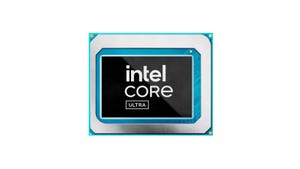Google’s plans for its Smart TV product are finally out of the box. Some of the things it announced for truly lived up to the considerable pre-launch hype, and it was certainly the shot in the arm for TV that it promised to be. The ability to seamlessly search for, flick between and personalise web and TV content is something that consumers have been crying out for years, and something the pay TV industry has largely failed to deliver.
May 24, 2010

By Giles Cottle
Google’s plans for its Smart TV product are finally out of the box. Some of the things it announced for truly lived up to the considerable pre-launch hype, and it was certainly the shot in the arm for TV that it promised to be. The ability to seamlessly search for, flick between and personalise web and TV content is something that consumers have been crying out for years, and something the pay TV industry has largely failed to deliver.
That’s not to say they have not tried. Vendors have spent recent months trumpeting their smart TV navigation and content discovery tools for pay-TV operators, while operators themselves have waxed lyrical about opening their services to third party content. Yet Google, backed with the best search technology in the world and with no legacy TV business to protect, is perfectly positioned to take this multiple steps further.
The provision of a genuinely open platform is crucial, and something every content provider wants. Support for Flash is also pivotal, as it will allow consumers to access a genuine range of web video content. Despite the very public kicking it has received in recent weeks, Flash remains a technology used by a majority of web video services, particularly the free, premium services such as Hulu and iPlayer, which are among the biggest drivers for bringing web content to the TV.
Google also has one other crucial, yet subtle, advantage: its brand. Most pay TV providers will tell you that it is incredibly difficult to get people to change their viewing behaviour: even video on-demand has struggled to take off, in part because people simply gravitate back to the linear stream when they have watched a few shows. Old habits die hard in TV.
Google has a much better shot at genuinely changing things, because it is an internet player. People see it is as such and know it as a tool for finding things. Searching within your Sky EPG would be an enormous step-change; carrying out a Google search on TV would be much less so.
Google’s motivation for entering the TV space is not difficult to fathom: it is above all an advertising company, and wasted no time in reminding the world at the launch that the global TV advertising market is worth a cool $70bn. More interesting are the motivations of Google’s Smart TV partners.
Best Buy’s involvement is evidence that Google has learned its lesson from the Nexus One fiasco. It is also interesting that Sony is creating devices for the standard despite being historically a very closed company that uses its own software, and despite it aggressively pursuing its own vertically integrated connected TV strategy for its Bravia TVs. Has Sony had a sudden desire to embrace all things open? Almost certainly not: it is most likely a reaction against Apple, which has given numerous Sony products and devices a through pasting over the years, most notably its iconic Walkman.
The Dish Network’s involvement also raised some eyebrows, given Google’s ill-hidden dislike of traditional operators, and that the move is being hyped as one that will destroy the business model of the traditional TV players. Yet in a sense, this is a less surprising addition than the others. Yet crucially, unlike the cable and IPTV operators, Dish is not a broadband operator, and it directly competes or clashes with Google in relatively few areas. Whether Google goes on to partner with other pay TV providers will be of particular interest.
Yet Google steam-rolling through the TV landscape is far from guaranteed. The sheer number of companies present at the launch is indicative of the difficulty it will have in breaking into an ecosystem that is arguably even more closed than that of mobile.
There are numerous issues. The Consumer electronics industry is a price sensitive one; most of today’s connected TVs carry a price premium of at least 50% compared to non-connected equivalents. This will be exacerbated for Smart TV, as its support for Flash will require more powerful chipsets than those in most set-top boxes. However, Intel, which will provide the chipsets, is renowned for staking a lot up front to try and make a technology succeed (exhibit a: WiMax), so may burden some of the cost here.
All of Google’s technical prowess also does not negate that most websites, in their current forms, look truly awful on the TV screen. The inclusion of the Chrome browser will help matters, but any website developer that wants their site to appear properly on the TV will still have to optimize it for the big screen.
And while Google claims that it needs the support of the whole TV ecosystem to make Smart TV work, one group it is unlikely to be able to count on is the broadcasters. Many will have recoiled in horror at the part of the demo in which a fantasy sports app appeared while users watched a live basketball game. Such use cases are appealing, but fraught with issues, most notably the potential for an app provided by one brand to appear within a show or event sponsored by a competitor brand. This is less of an issue in the US, but in Europe in particular, broadcasters have lobbied hard against the practice. Of course, Google is thinking into the future, to a time when we no longer watch linear TV. But today, linear TV is still important, and broadcasters will fight it tooth and nail.
As evidenced perfectly by the appearance of “Mothers Day MILF” in the search box during the demo, the gap between TV and the family room and the private world of the web is not simply a technical one.
Read more about:
DiscussionYou May Also Like





.png?width=300&auto=webp&quality=80&disable=upscale)

.png?width=300&auto=webp&quality=80&disable=upscale)
_1.jpg?width=300&auto=webp&quality=80&disable=upscale)



.png?width=800&auto=webp&quality=80&disable=upscale)